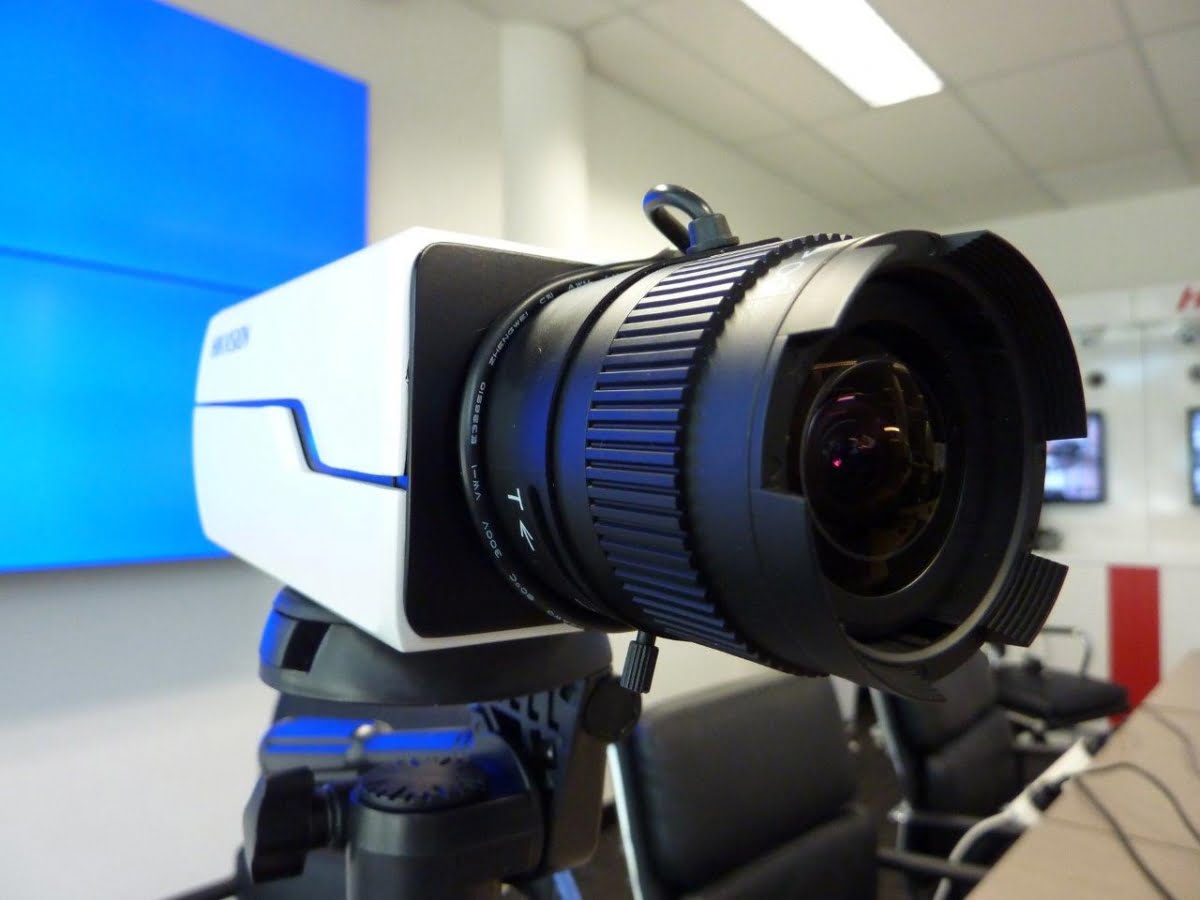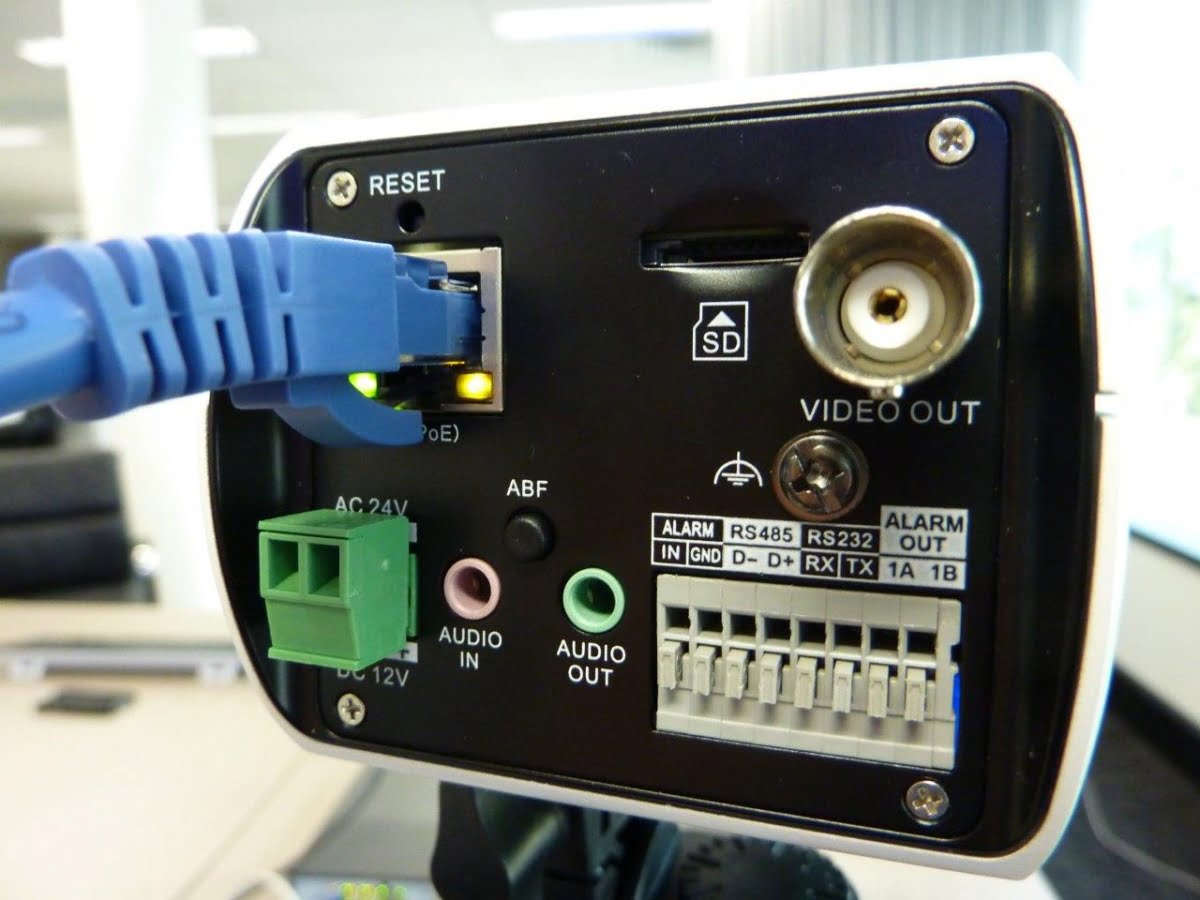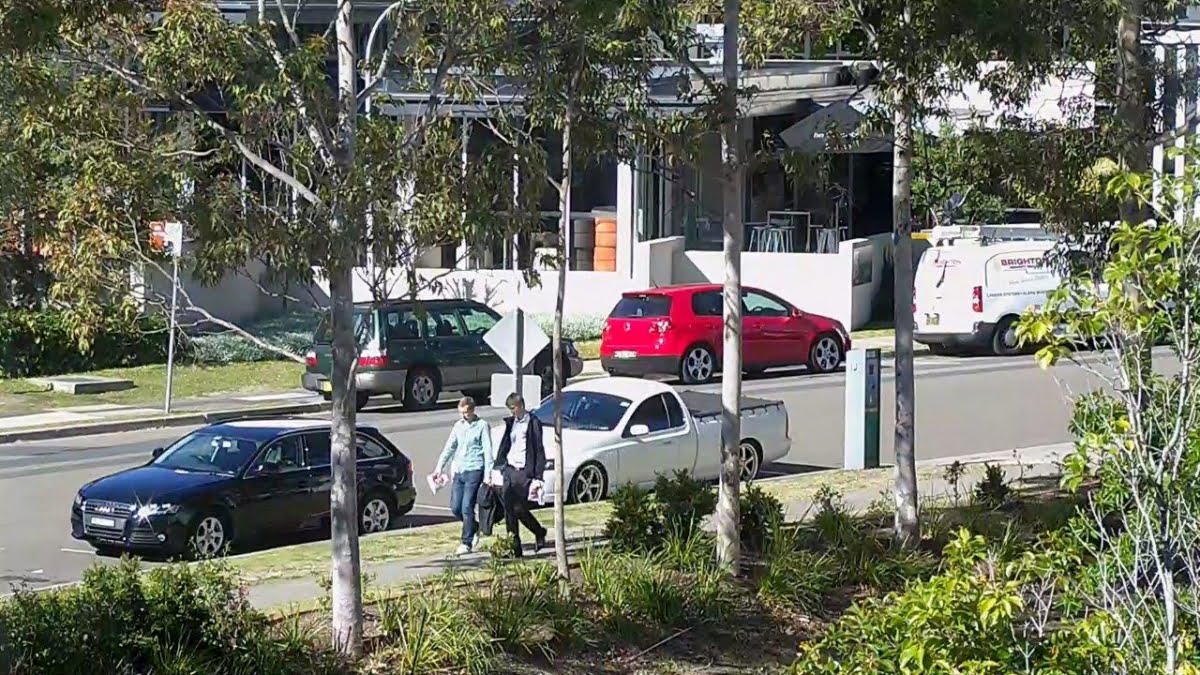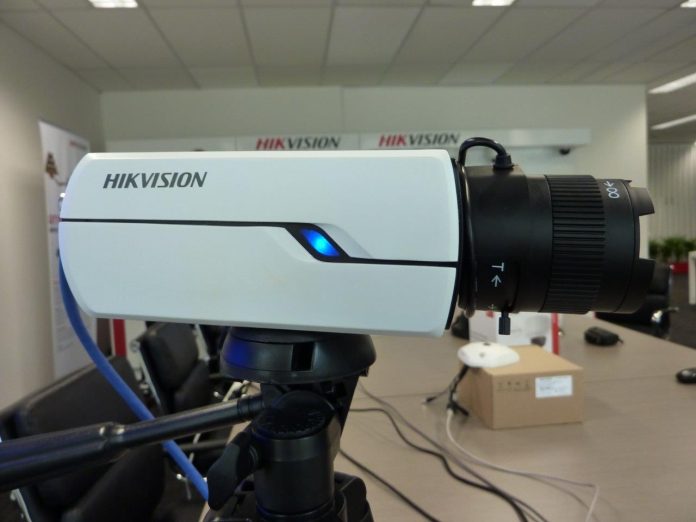Hikvision’s new 4-Line Smart IP is a solid range of cameras that combines high performance in key areas like wide dynamic range, colour rendition, and pointy prices. In key ways, the 4-Line represents Hikvision’s coming of age.
I got a look at a swag of new stuff at the Hikvision demo room in North Ryde late last month. Hikvision’s is one of the better set up demo spaces I’ve seen but best of all, the boys have taken the opportunity to install a broad spread of Hikvision cameras on the roof of the large building housing their office. The building holds a commanding position looking over serious distances with major infrastructure assets in all directions. These include nearby roadways, intersections, and multiple industrial and retail complexes.
In this feature, I’m going to focus on the 4-Line series but it’s a difficult thing to do. For a start the Hikvision back story is fascinating and while the boys fill me in on the enormous size of the company, its huge, new manufacturing facilities and 3500 surveillance engineers, it’s just impossible not to warm to their story.
Michael Bates and Tony Lagan are sensible men with technical acumen and more than enough experience to give them a frame of reference through which to view Hikvision’s current and future aspirations. Their commitment to the company and their ownership of its drive to become CCTV’s technology leader is palpable throughout this demo.
Adding to the challenge today is Hikvision’s 6-Line series and in particular a pair of cameras I take an immediate shine to – the first is an IR equipped 6MP hemispheric. The second is Hikvision’s Darkfighter. I’m going to review these in upcoming issues but we spent a bit of time looking at each during the 4-Line demo and it’s seriously good kit.
4-Line Smart IP
4-Line Smart IP is a range of 16 cameras. For the sake of readability I’m going to generalise here and not include the model numbers. There are box (full body) cameras, indoor domes, IR bullet cameras and outdoor domes, all with resolution options of 1.4 (720p, DWDR, 60ips), 1.3 (120dB, WDR, 30ips), 2MP (1010p with DWDR and 30ips) and 3MP (1080p with 120dB, WDR and 30ips). If you need it, there’s onboard storage to 64GB with all 16 cameras.
The Hikvision demo room has a good spread of 4-Line cameras up and running on the video wall but the camera we are looking at most specifically is the DS-2CD4024F-(A) 3MP Full HD box camera sitting on a stand on the main table. Doing a lap, I can see it’s a handsome camera – the first thing I notice is the blue LED light on its flank. As well making the camera look cool, it allows security staff to see at a glance that the camera has power. Neat.
Lagan tells me this unit is available with a standard or P-Iris lens – the latter is a lens and processing combination that improves a scene’s depth of field. In this case, we are looking at the standard lens version. Before we start looking out across the North Ryde scenery, Lagan takes me through the range’s specifications and what really strikes me with the 4-Line is just how well optioned it is. Hikvision’s engineers have left nothing out.

The primary specs include a 1/3-inch progressive scan CMOS sensor giving a minimum scene illumination of 0.1 lux at F1.2 and 0.01 in monochrome at F1.2, both with AGC on. Depending on the model you select, there’s a maximum resolution of 2048 x 1536 pixels. At that resolution you get 20 frames per second. Come back to 1920 x 1080 and 1280 x 720 and it’s 60 or 30 frames per second, depending on which camera you have.
WDR is a very strong 120dB and there’s digital noise reduction and auto back focus. Although we are looking at a full body camera without IR, you can select an IR bullet camera with a Smart IR function allows IR strength adjustment governed by analytics. Power is reduced when faces are closer to the camera, reducing blooming.
Compression options are H.264, MPEG4 and MJPEG, with H.264 in baseline profile, main profile <I>and<I> high profile. This is nice work from Hikvision. H.264 is a framework rather than a standard – for the company to have gone to the trouble of developing high profile H.264 shows great integrity in my opinion. Depending on the compression option selected, video bit rate runs from 32Kbps to 16Mbps.
“The first thing I notice is the WDR performance, which is exemplary for a 3MP camera. The transition from internal to external view is pretty much seamless to my eye”
A big thing these days is clever bandwidth and storage management and Hikvision is on the money here. An advanced codec is used to increase image quality by 30 per cent at 2Mbps in 720p mode – these are good numbers in the real world. Also helping out with bandwidth management is region of interest which allows techs or users to pare back the resolution of non essential parts of a camera’s view – the sky, a ceiling or a blank wall, for instance.
And speaking of walls, 4-Line also sports a corridor view which maximises useful pixels in a hallway. You simply select Rotate Mode when commissioning the camera. Meanwhile, getting live images in front of security staff is handled by triple streaming and there’s autofocus, which saves operators from having to make adjustments due to drift, changes in a scene or action that takes place right in front of a camera.

Plenty of options for storage, alarm, audio, local monitor and power on the stern of the 4-Line
Intelligent Video Analytics is a big thing with 4-Line and it’s used to undertake recognition of the presence of human faces (which can activate recording). IVA-driven intrusion detection picks up moving objects in a scene and can trigger alarms or event recording. The analytics also notice if there are storage problems, loss of network connection, lens redirections, de-focusing or tampering thanks to integrated video quality detection.
Something else the 4-Line has is 2-way audio, with a built in microphone and appropriate audio compression. Audio detection is also part of the analytic suite. Operators can use audio detection to analyse sounds and trigger alarms based on particular noise parameters – gun shots or shouting, or no noises at all.
Driving the 4-Line
The first thing I notice when we start driving the 4-Line is that the Hikvision GUI is simple and it works well. As Lagan shows me features like clip recording on the fly I can see how easy it all is. There’s deep functionality but you’re not monstered by multiple camera trees or overly complex controls.
It’s a bit of a funny day – cloudy and bright. Later on when I’m leaving I measure the lux outside just over 6000, but it was much brighter during the demo period – probably 15-18,000 lux. There was plenty of glare making it a good scene for a demo of a camera with 120Db of WDR. We are looking out a window, across treetops and over a road lined with cars to further commercial buildings. There are people on the street giving us a good frame of reference in the middle distance.
Looking at the image out the window the DS-2CD4024F-(A) 3MP is really doing well. The first thing I notice is the WDR performance, which is exemplary for a 3MP camera. The transition from internal to external view is pretty much seamless to my eye.
“As far as I am aware our WDR is one of the highest – that’s why that image looks so good,” Lagan tells me. “We are using the Amberella chipset which gives better low light performance and 3D dynamic noise reduction, which works really well – cuts noise and reduces bandwidth.”
Something else that’s noticeable is the colour rendition, inside and outside, it looks very balanced and natural to my eye – especially outside where the backlight flaring off the building next door is giving it every excuse to go to pieces. All the way through the trees and across the street, contrast and detail stay tight. I’m getting a lot of detail and texture from every surface in the camera’s wide field of view.

Screen grab – the cafe behind the red VW Golf is at least 100m from the lens. Detail is strong from front to back of this scene – bear in mind the image here is 280Kb…the original grab was 1238Kb…
After we’ve checked out the scene outside, Lagan shows me how the auto focus works – putting his hands in front of the lens – instantly the motorised lens in the 4-Line adjusts to the closer subject and we get a perfect clear image at a range of less than 6 inches.
Next, we look at a recorded demo of the 4-Line’s de-fogging technology. This might sound like a gimmick but when the boys run the demo of a very smoggy cityscape the results are impressive. As Lagan explains it, activating defog really is like flicking a light switch. Given Australia has rainy days, bushfires, dust storms and foggy mornings of its own, such capability is worthwhile. The tech behind defogging is an algorithm that strips out the light reflected from particles in the atmosphere and amplifies available colour and it works a treat.
Hikvision’s 4-Line Smart IP series is an important release. This big range of cameras comes with plenty of operational functionality but most importantly, it’s based on an optical solution supported by quality processors that offers strong performance in the real world. It’s not a stretch to say I was surprised by Hikvision’s 4-Line. It really has taken the world’s biggest surveillance manufacturer to another level.
By John Adams








